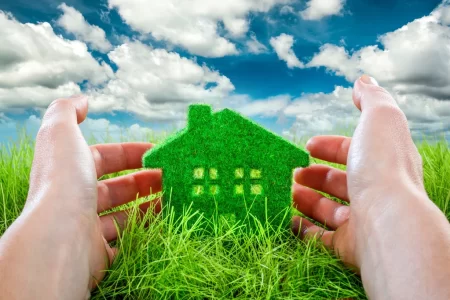 As environmental consciousness continues to grow, more and more people are seeking ways to make their homes eco-friendly.
As environmental consciousness continues to grow, more and more people are seeking ways to make their homes eco-friendly.
Embracing sustainable practices not only benefits the planet but also promotes a healthier and more harmonious living environment.
Today, we will explore various design ideas and tips to help you create an eco-friendly space within your home.
Optimal Energy Efficiency
One of the key aspects of an eco-friendly home design is optimizing energy efficiency. Start by replacing traditional incandescent bulbs with energy-efficient LED or CFL lights, which consume significantly less electricity and have a longer lifespan.
Consider installing smart home systems that allow you to control lighting and temperature settings remotely, ensuring energy is used sparingly.
Additionally, proper insulation, double-glazed windows, and efficient appliances can minimize energy waste, reducing your carbon footprint.
Sustainable Materials
When choosing materials for your home, opt for eco-friendly options. Consider using reclaimed or recycled materials, such as reclaimed wood for flooring or countertops, which not only adds character but also reduces the demand for new resources.
Look for furniture and decor made from sustainable materials like bamboo, cork, or organic cotton. These materials are renewable and have a lower impact on the environment compared to their conventional counterparts.
Natural Lighting and Ventilation
Maximize natural lighting and ventilation to reduce reliance on artificial lighting and air conditioning. Design your space to allow ample natural light to flow in by using skylights, large windows, and open floor plans.
Additionally, strategically placed windows and vents can facilitate cross ventilation, reducing the need for air conditioning and improving indoor air quality.
Water Conservation
Implementing water-saving measures is crucial in an eco-friendly home design. Install low-flow fixtures in bathrooms and kitchens to reduce water consumption without compromising functionality.
Collect rainwater in barrels or install a greywater system to reuse water for irrigation purposes. Landscaping with native plants that require less water and incorporating permeable surfaces in your outdoor areas can further reduce water usage and prevent runoff.
Sustainable Landscaping
Extend your eco-friendly design beyond your home’s walls by incorporating sustainable landscaping practices. Opt for native plants that are adapted to the local climate, requiring less water and maintenance.
Utilize natural mulch to retain moisture in the soil and suppress weed growth. Design your outdoor space to include rain gardens or permeable surfaces that allow water to infiltrate the ground, reducing stormwater runoff.
Designing an eco-friendly home space is not only a responsible choice but also an opportunity to create a more sustainable and healthier living environment. Start small and gradually incorporate these eco-friendly design ideas into your home, and together, we can build a greener future.
Picture Credit: VistaCreate



